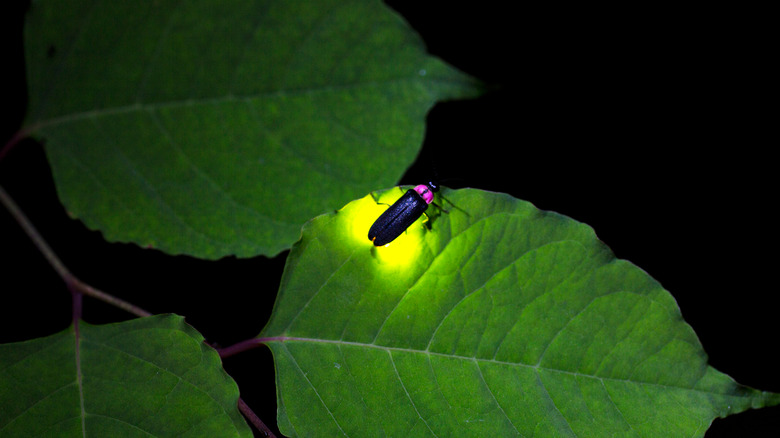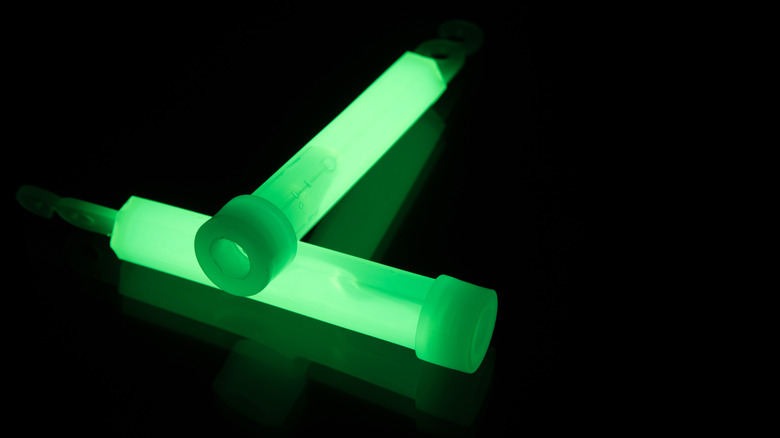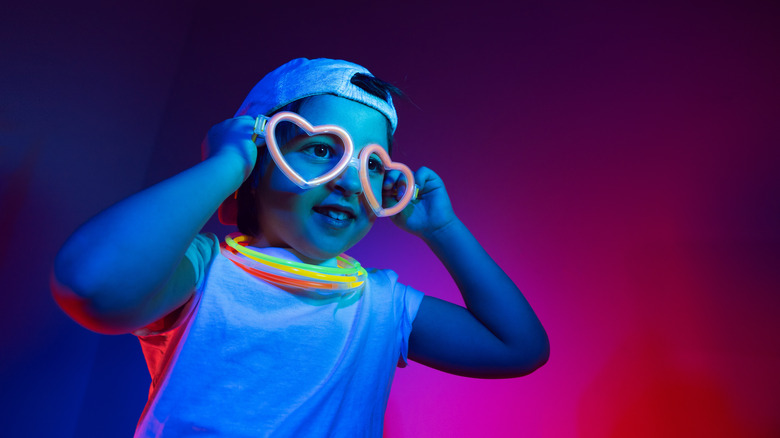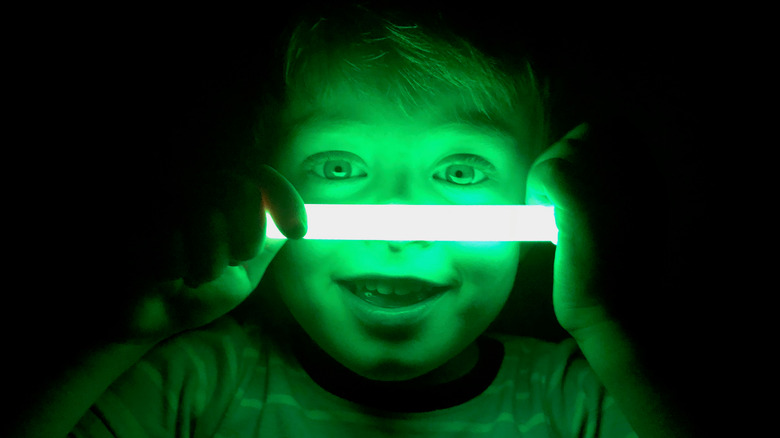How Do Glowsticks Work?
Name a plaything that's enjoyed by both small children at birthday parties and young adults at techno-fueled raves. If you guessed "glowsticks" (and you just had a huge hint in the feature image above this paragraph), you are correct! Like laser pointers, walkie-talkies, drones, and a host of other technologies, glowsticks are the consumer version of a scientific application that has multiple legitimate uses in research, industry, and, in particular, the military.
It took the scientific community a while to get there, but once they figured out how to create the chemical reaction that produces the soft glow of the glowstick, it was only a matter of time before they were in the hands of consumers. Of course, they were helped along by the fact that these chemicals are so trivially inexpensive that it's possible to outfit a whole gaggle of children in glowing necklaces and bracelets for a few dollars.
The need for 'cold light'
Most of the sources that we have traditionally used to produce light — such as an open flame (back when we used kerosene lamps, for example) or an incandescent bulb — also produce heat, as Mental Floss notes. In some cases, such as a heat lamp at a fast-food restaurant, that's kind of the point, while in other cases, the heat is just a by-product that we've collectively learned to live with (you know better than to touch a light bulb, for example).
However, there are times when light is necessary, but the heat produced by the light source is unwanted. Perhaps most famously, the military was interested in cold light, and for good reason: A light source that produces heat is likely to be picked up by the enemy's heat-detection machinery. By the 1960s, researchers knew that the key to producing cold light was/is chemiluminescence, which is to say, the light produced by chemical reactions. In nature, you can see chemiluminescence in its full display in the behavior of the humble firefly, or lightning bug, as they're called in some parts of the country (pictured above).
The science of it all
The science behind the production of light is probably its own undergraduate-level course at multiple universities, but Solar Schools explains it at its most basic level. Specifically, whenever an atom is heated up (or is otherwise "excited," as Mental Floss describes it), it produces photons. Photons, you are probably aware, are tiny particles of light (again, this explanation is extremely basic and leaves out considerable nuance).
But how to recreate this chemically in a way that doesn't produce heat? As Mental Floss explains, back in the 1960s, a chemist named Edwin Chandross and his colleagues were working to answer this question. Eventually, through trial-and-error, Chandross' team came up with the perfect combination: hydrogen peroxide combined with a diphenyl oxalate ester. When the two substances are combined, you get a nice soft light that doesn't produce any heat.
Of course, you may have already noticed a problem with this method: it doesn't last very long. Almost every child who has ever played with a glowstick has found themselves quite disappointed the next day when it doesn't glow anymore. And, of course, glowsticks don't glow until you "activate" them.
The satisfying crack of the glowstick
If you've ever played with a glowstick, you are certainly familiar with the fact that they don't come out of the packaging glowing. And there's a good reason for that: the chemical reaction that produces the glow doesn't last forever, so the manufacturers have instead given you a device that allows you to "activate" the stick when you're ready. And, of course, you do so by bending the plastic tubing that encases the chemicals, producing a satisfying cracking sound in the process. For a little extra effort, it can't hurt to vigorously shake it, too.
As Mental Floss explains, what you're actually cracking is a glass vial. The little vial contains hydrogen peroxide, and when you crack it open, the chemical reacts with oxalate ester and dye solution, and voila! You have a glowstick that is now, um, glowing. (Green and yellow glowsticks are trivially easy to produce, says the industry, while getting a good purple color is nearly impossible.)
Yes, glowsticks are safe (to a point)
Considering that the main users of glowsticks (at the consumer level at least) are small children and partiers, you may be concerned about the safety of the devices. You can rest assured that they are perfectly safe — mostly.
Glowsticks retailer glowlsticks.co.uk notes that users should take care to avoid getting the chemicals inside the sticks onto the skin or into the eyes or mouth. However, North Carolina Poison Control says that if the contents get on the skin, the worst that could be expected is mild irritation, and only in rare cases. The website also notes, rather matter-of-factly, that if a child ingests the oily goo inside the sticks, "don't be alarmed if lips and tongue glow for a few minutes." And while a child ingesting unknown chemicals is no joking matter, there's no denying that glowing lips and tongue have to be amusing as all get-out for parent and child alike. Similarly, the website says that in the case of skin exposure, simply wash off the glowing liquid with mild soap and water — which must make for a particularly fun bathtime experience.
Those things do contain hydrogen peroxide, however, and while you don't want to swallow that (per a study in the Canadian Journal of Gastroenterology and Hepatology), the amount inside consumer glowsticks is trivial.
Fun (and serious) uses for glowsticks
There are more uses for glowsticks than just fashioning them into necklaces and/or bracelets or waving them around in time to the music at a rave. Parenting blog We Have Kids has a few suggestions, including cracking them and throwing them into a bathtub, which, we have to admit, is probably better than letting the kids get the goo on their skin and then bathing them. The same blog also suggests adhering them to a frisbee to make for a particularly colorful game of catch.
Of course, there are serious uses for glowsticks, too, which shouldn't be a surprise considering that the military played a role in their development. For example, according to Cyalume Technologies, they're used by both the police and the military to direct traffic, mark perimeters, identify friendly (as opposed to enemy) soldiers, and even conduct surveillance. And considering that they produce a relatively small amount of light, they're useful for illuminating things such as maps or instructions without being so bright that they call attention to the person using it (something that should be avoided at all costs in military operations).





